
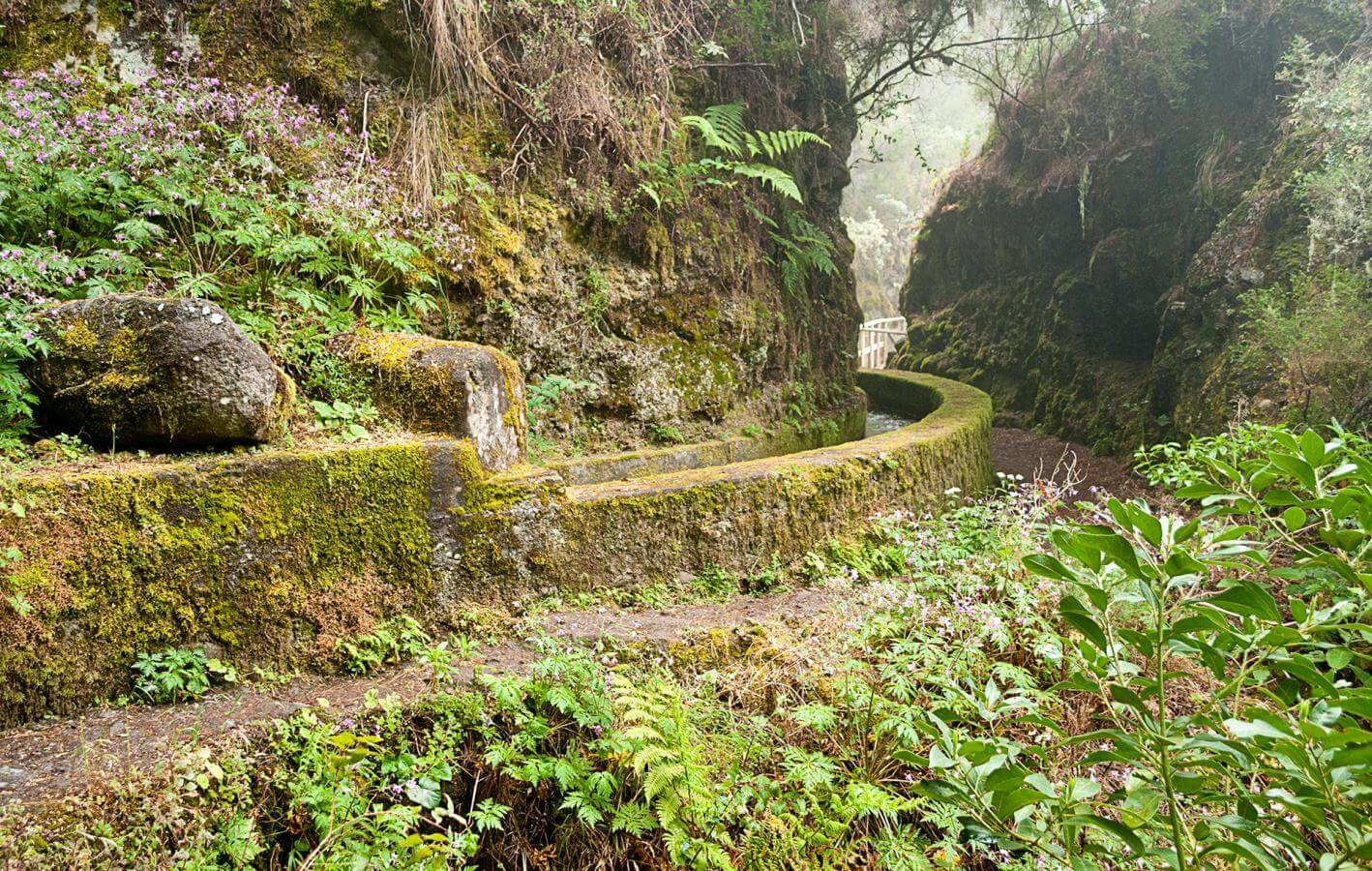

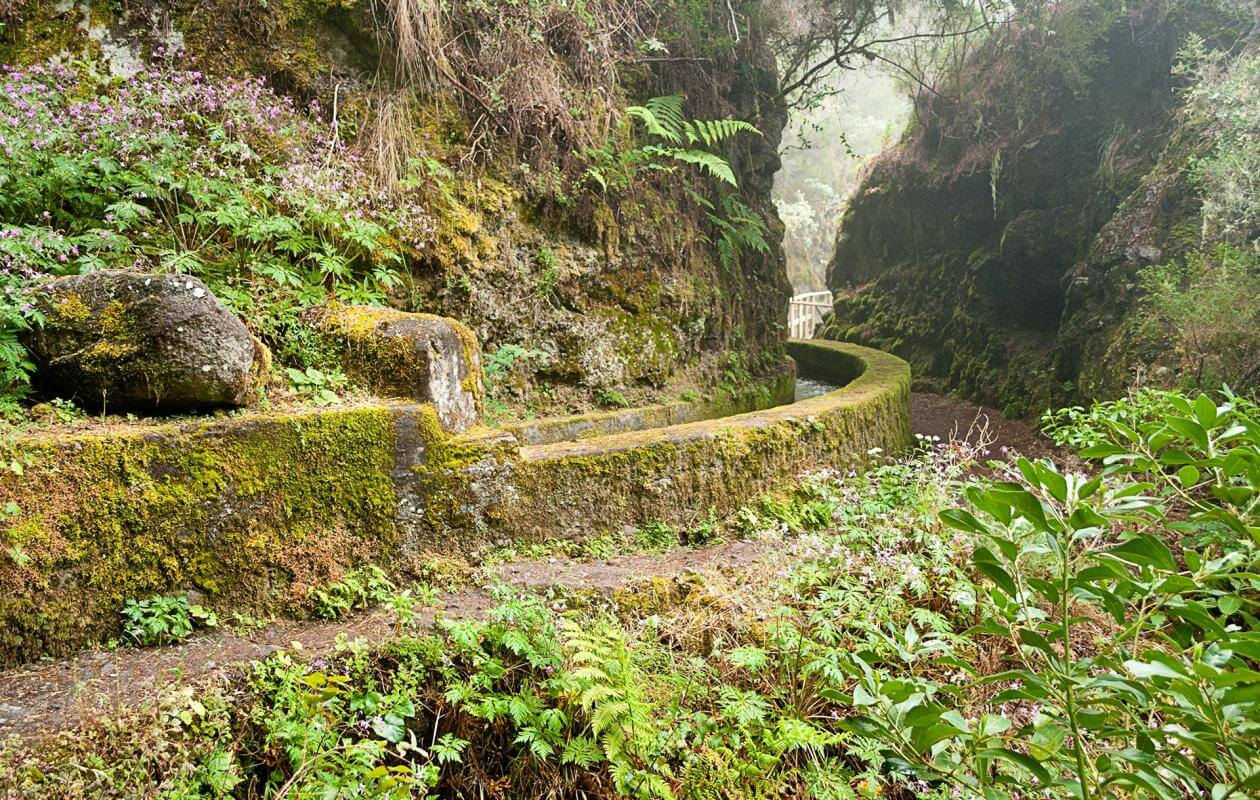
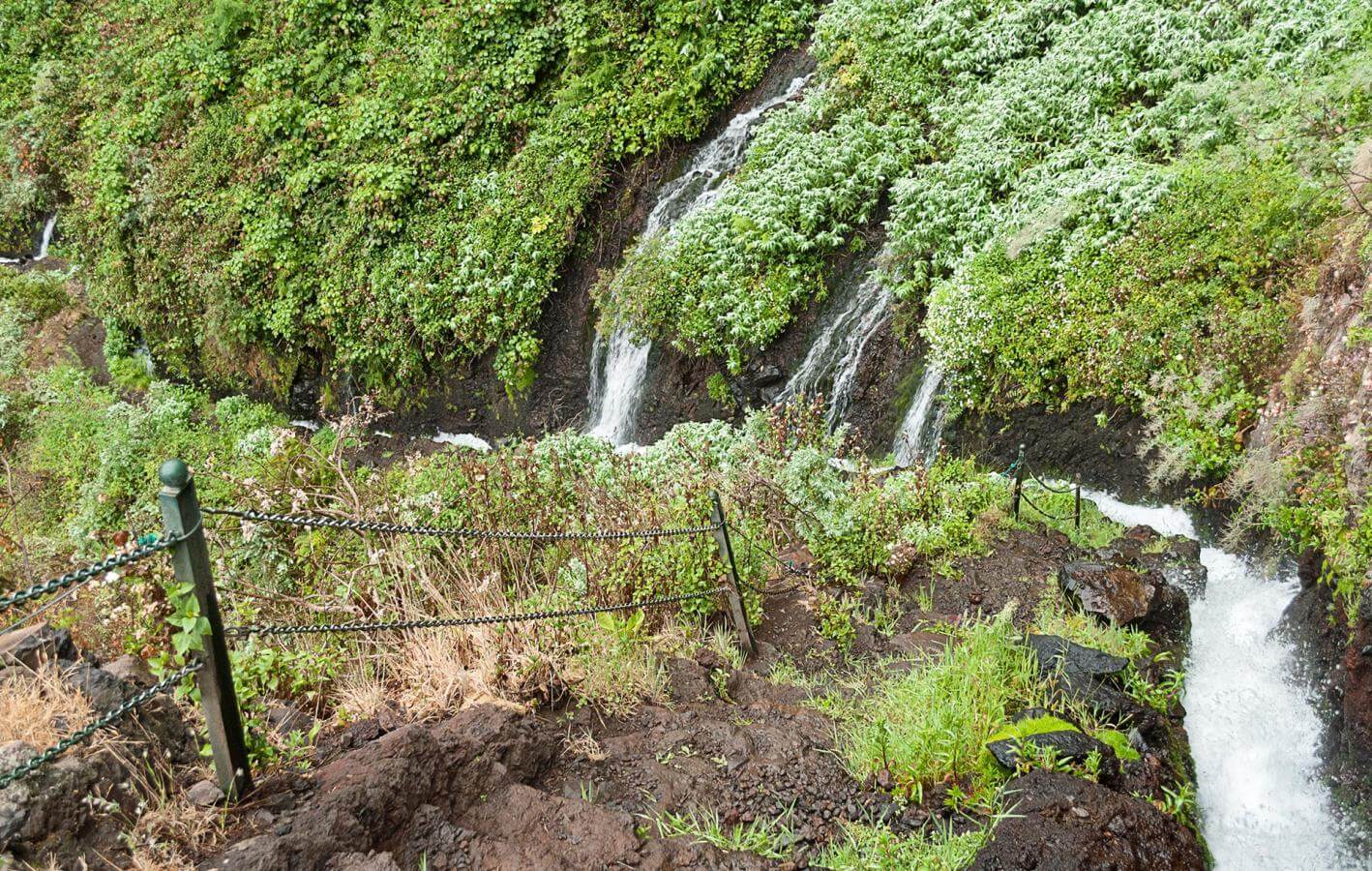

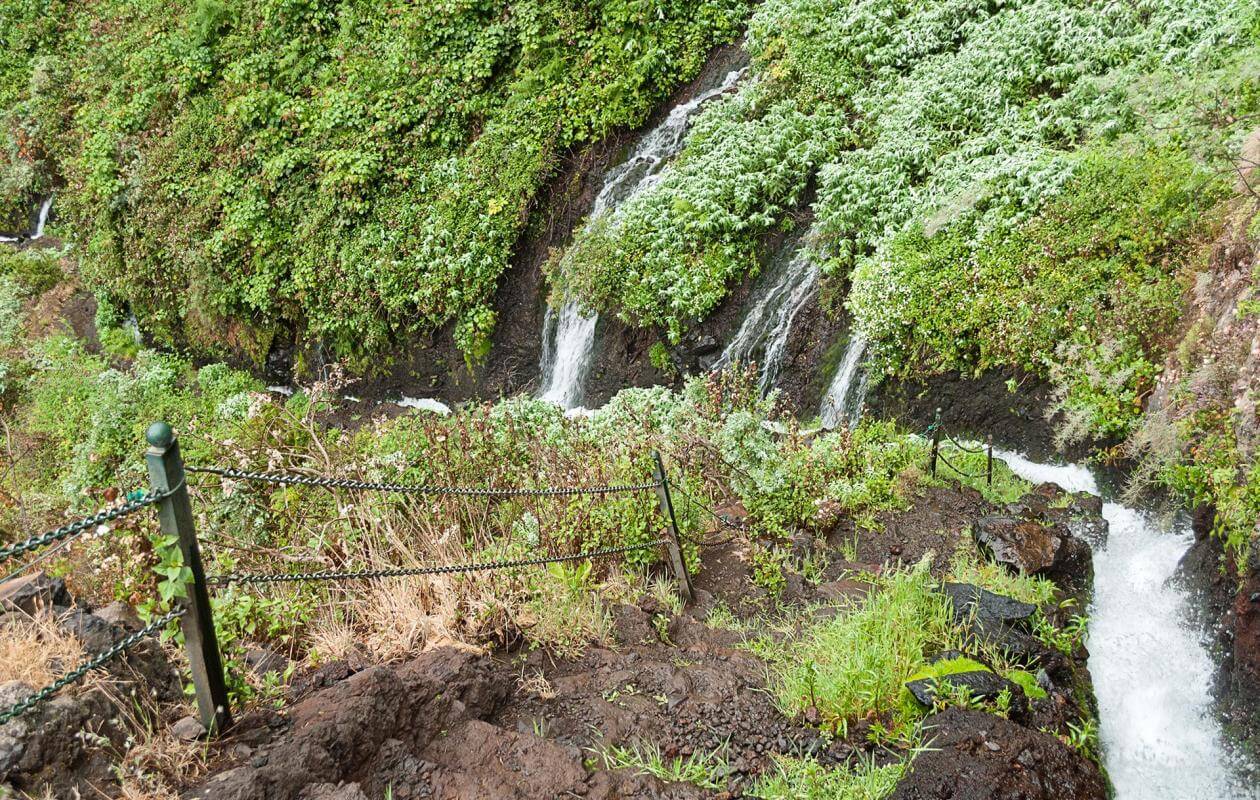
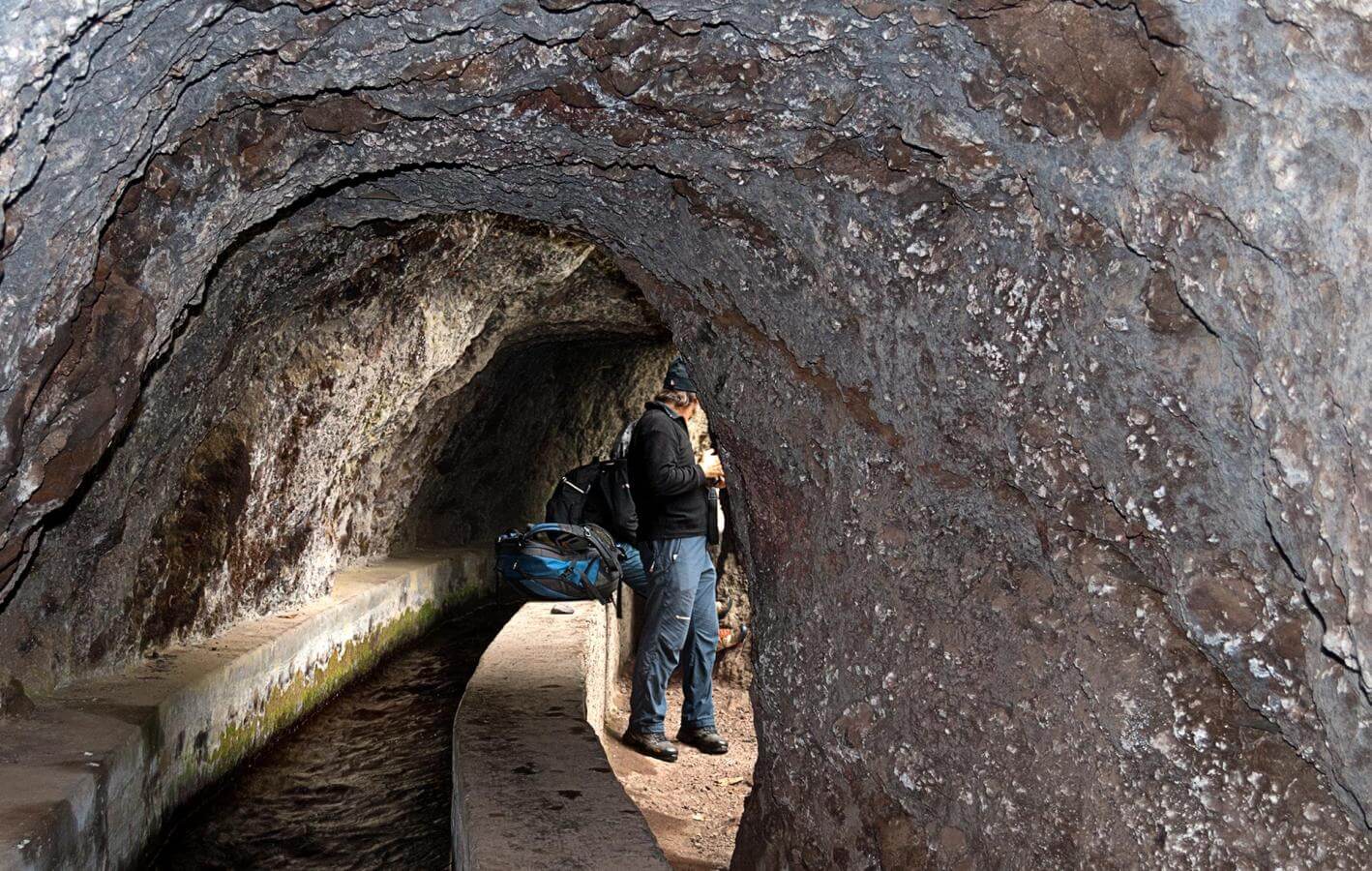

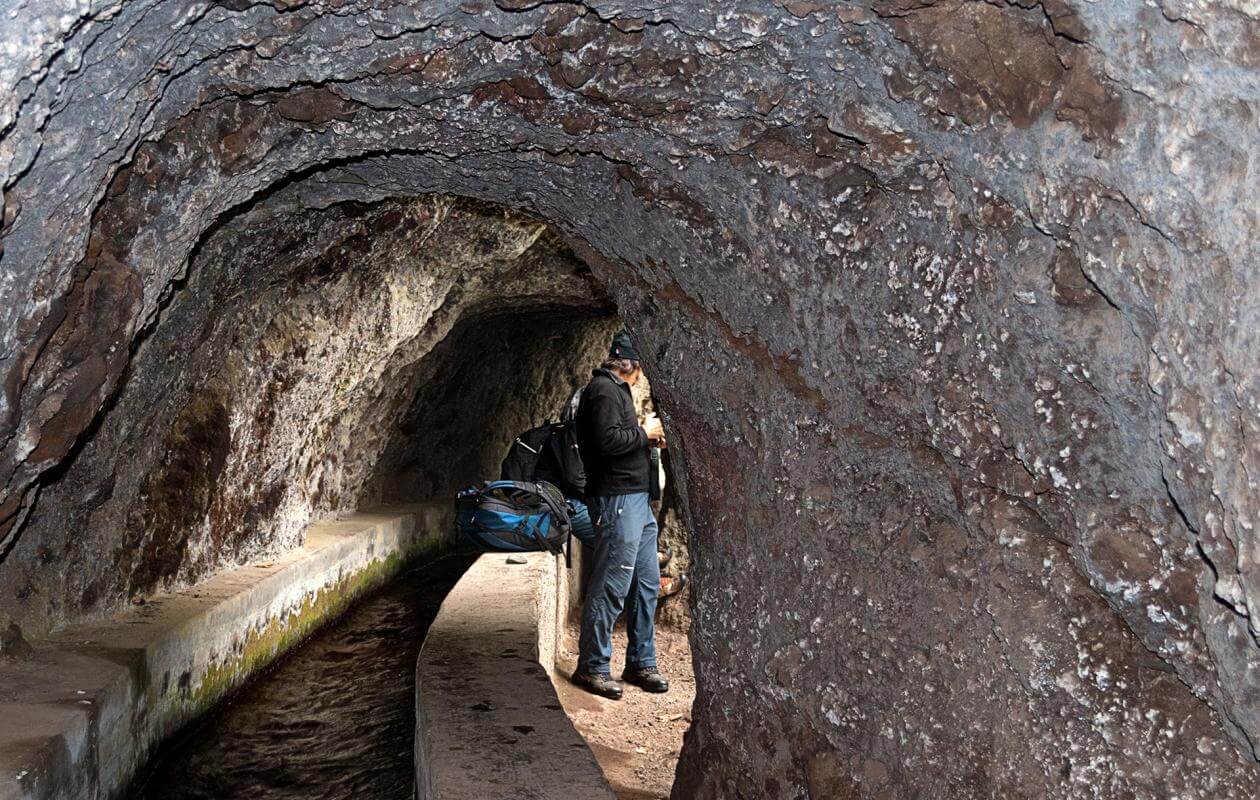
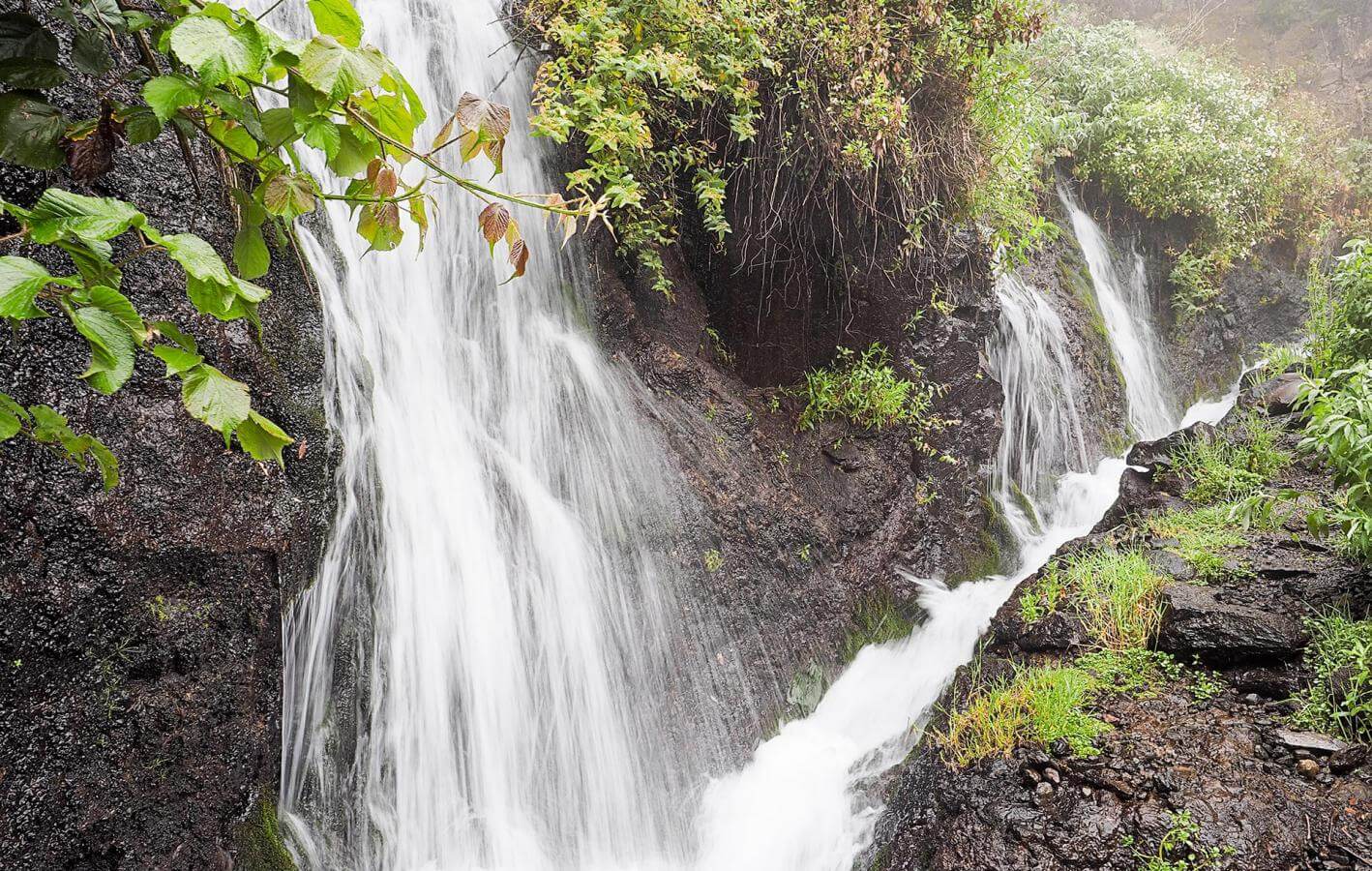

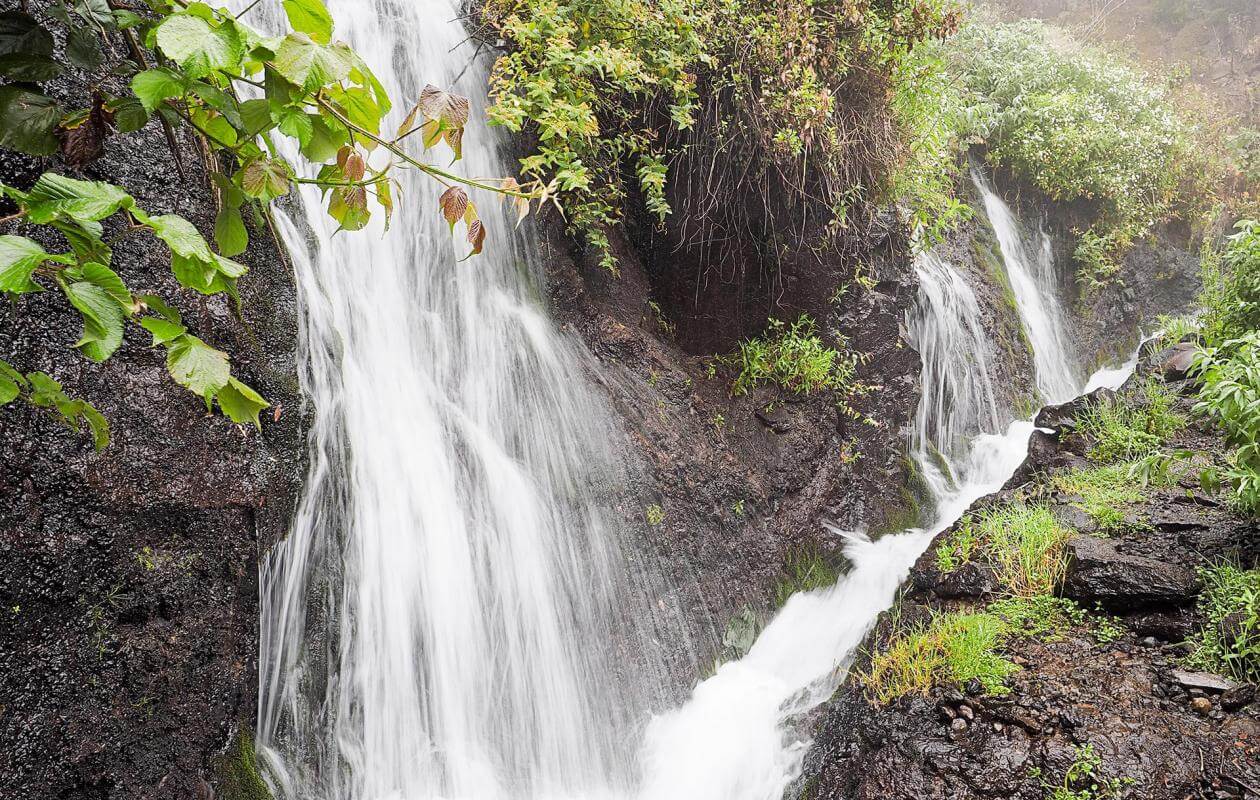
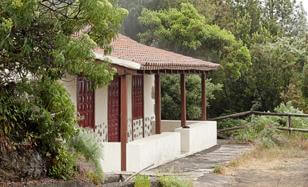
Casa del Monte is a small building with a porch made of shingles and wood, located at the very beginning of the trail that will take you to the Marcos and Cordero springs. It was made for the labourers that built the tunnels and canals. It has a small recreational and picnic area.
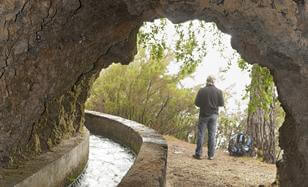
The process of canalising the water from the Marcos and Cordero springs to generate electricity began in the early 20th century. By the 1930s, the 13 tunnels through which the water was to flow were dug out; you will be going through these tunnels, the longest being 400 metres. Twenty-five years later, in 1955, the Mulato hydroelectric power plant started functioning in the lower part of the ravine.
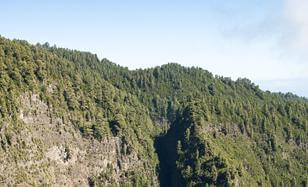
Between the fourth and the fifth tunnel, there is a clearing along the trail where you can see a huge dike in the wall in front of you. Dikes are intrusive volcanic formations that are created when lava quickly cools in cracks in the pre-existing rock body. They are generally rectangular and are often associated with underground aquifers, creating impermeable layers. They are very striking elements in the landscape and stand out as obviously different, as is the case here.
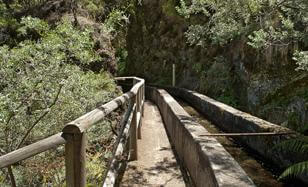
Here you have a beautiful waterfall with a drop of approximately 30 metres, which you will cross on a small bridge with wooden barriers. In La Palma, such waterfalls are called cabocos and are linked to watermills as the water from the upper area would be sent to the lower area to move the water wheel.
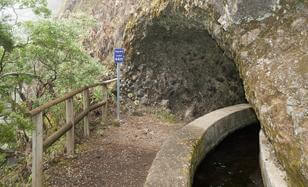
Stop for a while between tunnels 9 and 10 to listen to the spring and the sound of flowing water. This is the first place where you can clearly hear the water, in spite of the fact that you have been walking along the canal all this time and though you still cannot see the origin of the spring.
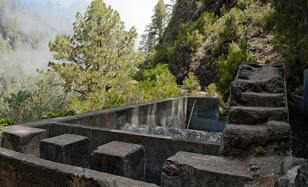
Shortly before reaching the Marcos spring, you have a small cement tank that is meant to control the amount of water that flows through the canal in a given period of time (1 hour). The aim of this system is to siphon off extra water if the spring provides more than the capacity of the canal, as, until now, the spring has been higher than the canal.
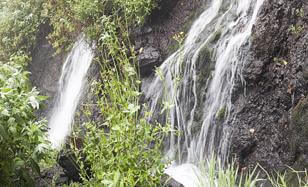
Take in the beauty of this location where the water flows from the source in the ground, it drips from the walls as it crosses the last tunnel, from where it flows into a canal dug out of the rock. The Marcos spring, the larger of the two, is located here at the point of saturation of a large aquifer that is constantly replenished by the horizontal rain caused by the trade winds.
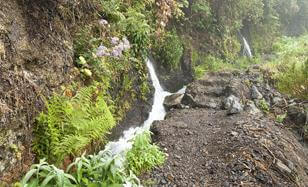
The Cordero spring, which is a hanging aquifer made up of three waterfalls that end in a canal, is less impressive and calmer than the Marcos spring, not only because it is less intense but also because of its location. However, this area is definitely more appropriate to take a break before starting on the return.
- Never leave waste of any type lying around, including cigarette butts. Leftover food leads to a proliferation of rats and wild cats, which pose a serious threat to the fauna.
- Respect the animals. Do not bother them or feed them. If you see an injured specimen, you can call the emergency number: 112. Do not pick flowers or plants.
- Do not pick up or take away stones or any other item from the natural environment. And do not move them to pile them up into sadly famous 'towers'.
- Respect the signposting along trails. Leaving the set paths causes damage to the environment and could also be dangerous for you and anyone with you.
- It is safer to keep your pet on a lead.
- Try not to alter the peace of the environment with excessive noise (loud music, yelling, etc.).


